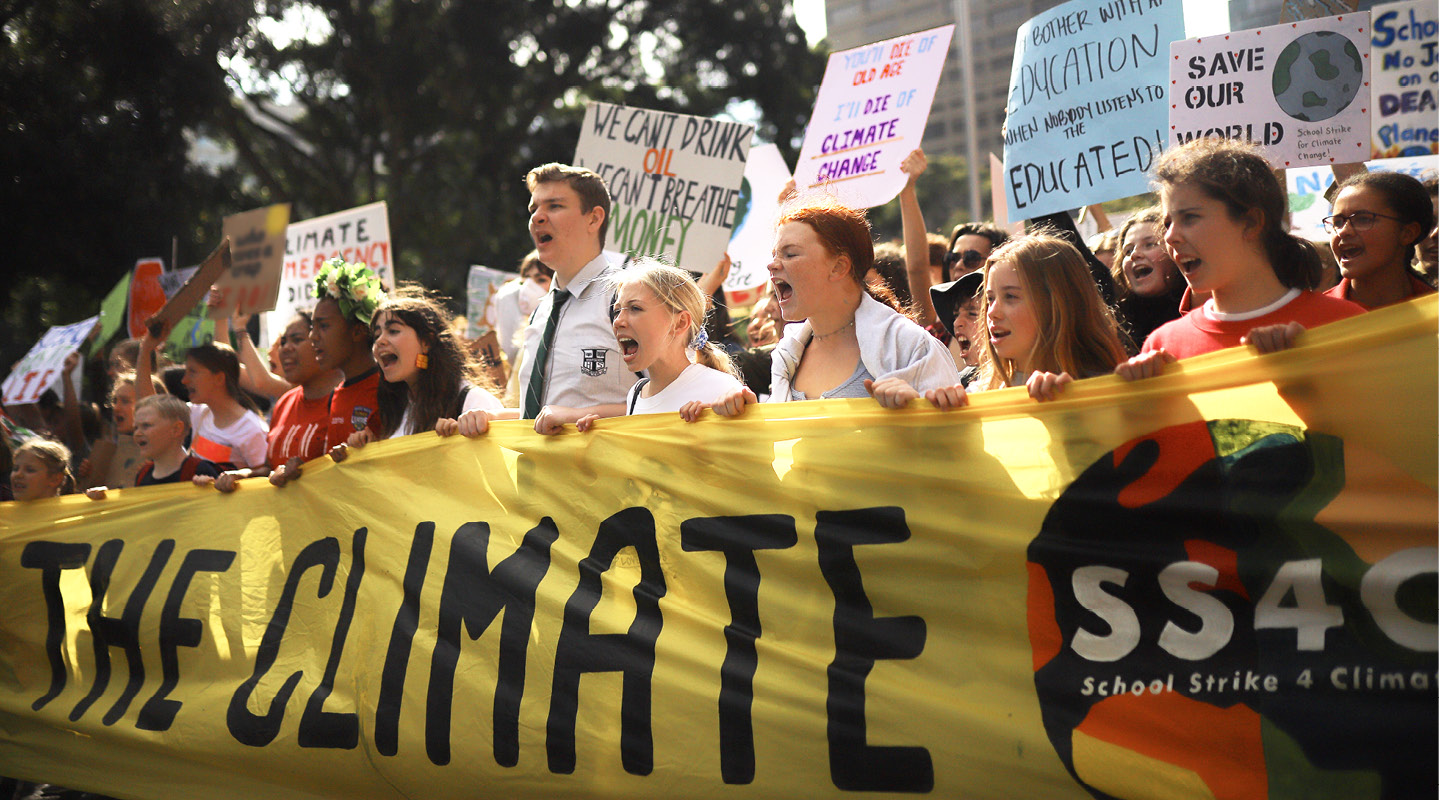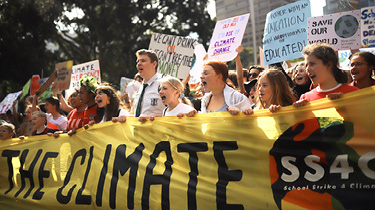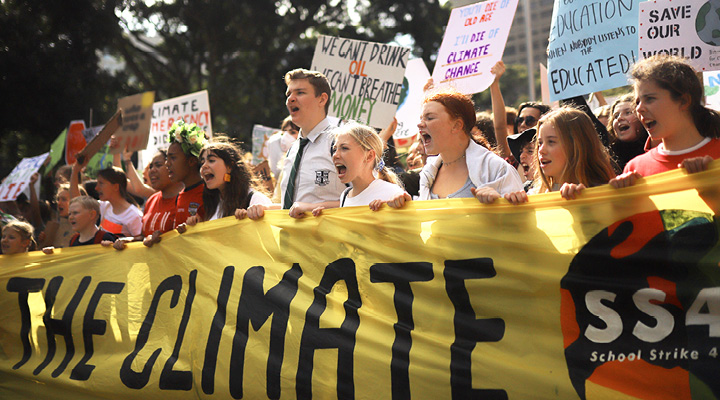They are in open revolt.
Anxious about their future on a hotter planet, angry at world leaders for failing to stop the crisis, thousands of young people around the globe poured into the streets on Friday for a day of climate protest.
At a time of fraying trust in authority figures, young people are increasingly driving the debate over how to avert the most catastrophic effects of climate change. Using the internet, they’re organizing across continents like no generation before them.
"I feel hopeful seeing the power of all these people here today, calling to end fossil fuels and build a better future for us,” said Marisol Rivera, 13, who was among thousands of protesters gathered in New York City.
Rarely, if ever, has the modern world witnessed a youth movement so large and wide, spanning across societies rich and poor. In the U.S., major protests were planned in New York, Washington, D.C., Chicago, San Francisco, and many other cities.
“What’s unique about this is that young people are able to see their future is at risk today,” said Kumi Naidoo, the head of Amnesty International and a longtime campaigner for environmental issues. “I certainly hope this is a turning point.”
The climate protests on Friday spanned the planet. In Quezon City, in the Philippines, protesters held a sign that read: “Dead Planet Soon. Act Now!” In Nairobi, Kenya, one sign said “Climate Emergency Now.” About 100,000 protesters took to the streets in Berlin, Germany. Thousands turned out to protest in Warsaw, the capital of Poland, which remains reliant on coal for its energy.
“We all know what the problem is,” said Antonia Brüning, 14, at the Berlin protest. “So why isn’t anything happening?”
In the Indian capital, New Delhi, where air pollution is among the worst in the world, dozens of protesters gathered outside a government building. “I want to breathe clean,” they chanted.
No protests were authorized in China, the world’s biggest source of greenhouse gas emissions.
In the U.S., strikes were planned in all 50 states. By late morning, protesters across the Eastern Seaboard were streaming out of schools and office buildings, pooling around steps of local city halls. In Baltimore, the police blocked roads as students arrived on foot, scooter, and skateboard. In St. Petersburg, Florida., about 200 protesters convened in at City Hall, including one dressed as a polar bear with a sign that said “Climate Action Now.”
In Des Moines, Iowa, around 500 protesters with signs gathered outside the State Capitol building under a cloudless sky, sweat rolling down their faces as temperatures hovered around 83 degrees.
The generational outcry comes as planet-warming greenhouse gas emissions continue to soar, even as their effects—including rising seas, intensifying storms, debilitating heat waves, and droughts—can be felt more and more.
Average global temperatures have risen by about 1 degree Celsius since the start of the Industrial Age in the late 18th century, and the world as a whole remains far from meeting its obligations under the Paris Agreement, the landmark climate accord designed four years ago to keep temperatures from rising to catastrophic levels. President Trump has said the United States, which has contributed more emissions than any country since the start of the Industrial Age, will pull out of the accord. Trump has said the agreement places too much of a burden on American businesses.
Certainly, this isn’t the first time in modern history that young people have been stressed about their future and galvanized around a cause. Young people led social movements against the Vietnam War and for civil rights in the United States.
Whether this generation of protesters will have any direct impact is unlikely to be clear for years.
“They are mobilized around an issue of consistent concern across countries and across geographic areas,” said Dana R. Fisher, a sociologist at the University of Maryland who studies contemporary protest movements. “It spans the developing-developed country divide. There aren’t that many issues that would unify in such a manner. And we all know the burden of climate change will fall on these kids’ shoulders when they are adults. They are acutely aware as well.”



